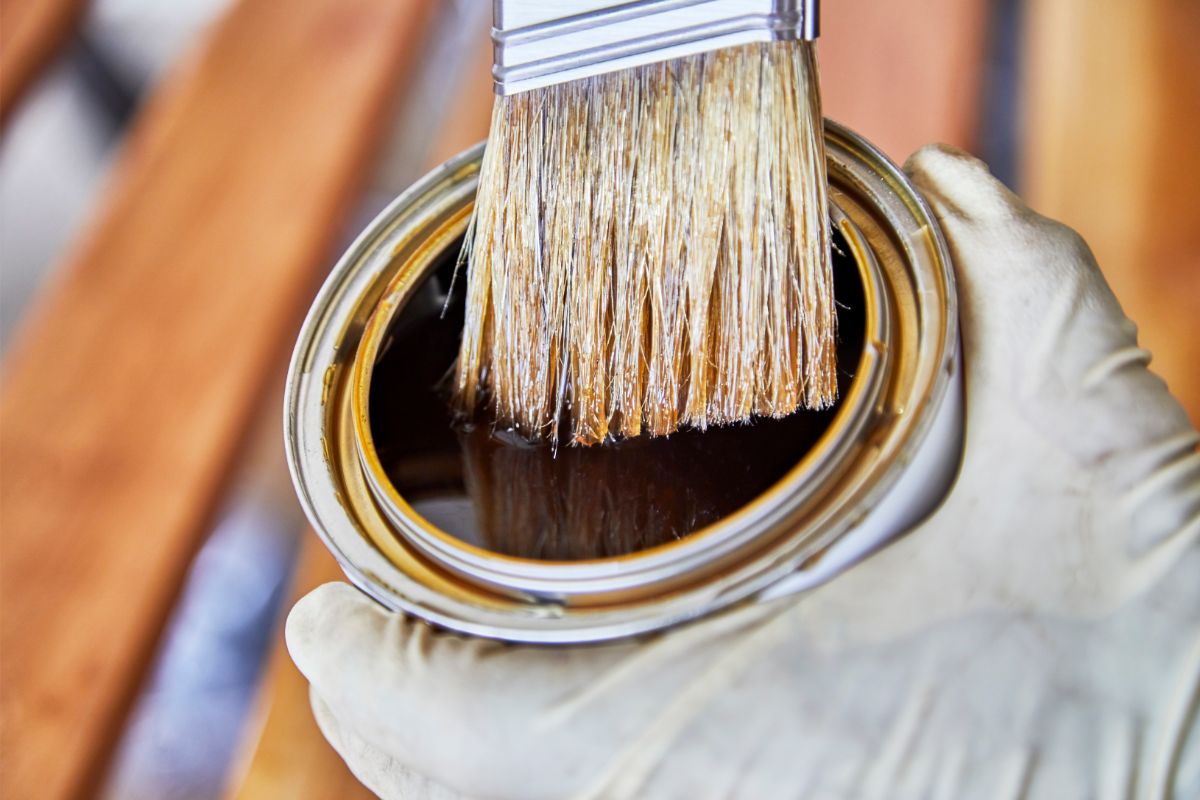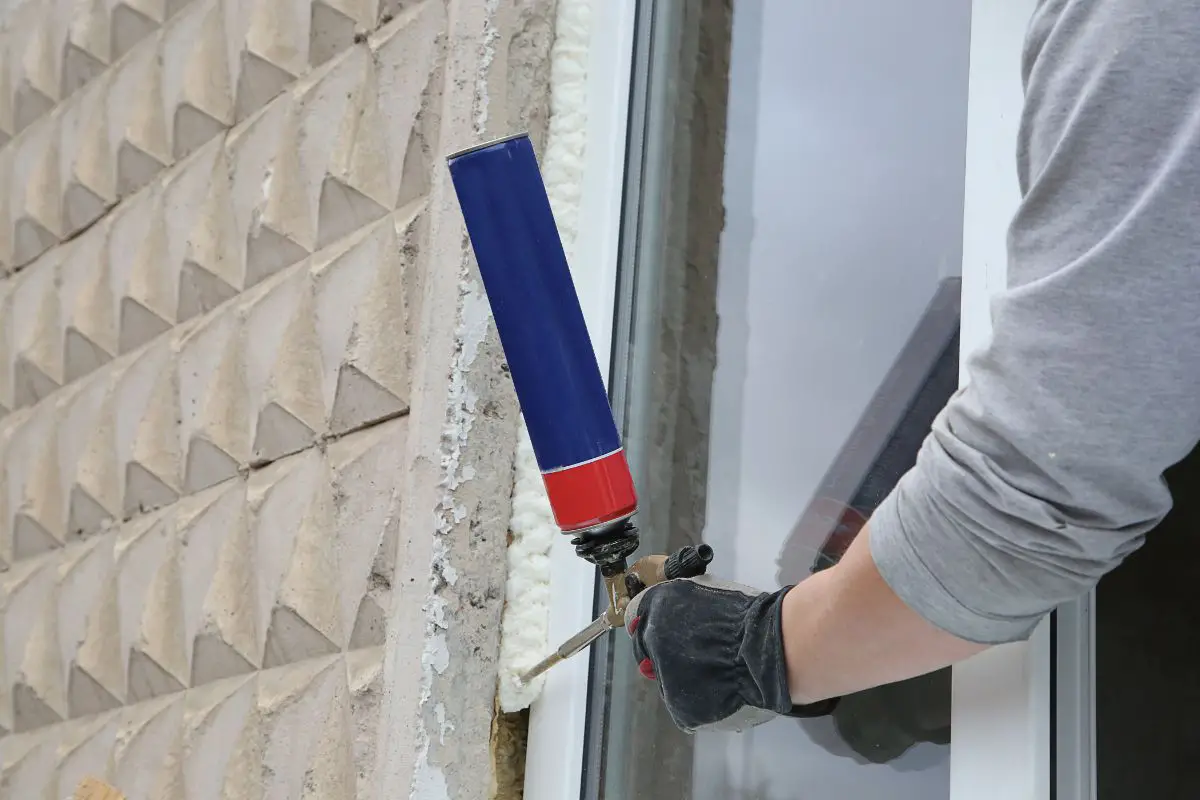Have you ever seen furniture that looks shiny, glossy, and smooth? Chances are, it has been treated with a protective coating called varnish.

Varnish is an essential woodworking tool for creating beautiful wooden works of art that can last for years.
In this article, we’ll explore what varnish is, the different types available, its uses and benefits, how to apply and prepare it correctly, and the differences between true varnish and oil-based polyurethane.
So grab your tools and let’s get started!
Types Of Varnishes
Varnishes come in many varieties, each of which serves its own purpose.
Oil Based
For example, oil-based polyurethane varnish is often used to protect outdoor furniture and decks. It provides superior protection against moisture and UV rays, while also giving the wood a glossy finish.
Water Based
Water-based polyurethane varnish is used primarily indoors and gives wood a more natural look with a matte finish.
Lacquer/Shellac
Lacquer offers high gloss and excellent protection against abrasion, while shellac is best for antique furniture restoration due to its high durability.
Tung
Finally, tung oil penetrates deeply into wood surfaces to create a soft luster that darkens over time. No matter which type you choose, always make sure to apply it correctly for maximum protection and longevity!
Uses And Benefits
Varnish offers a number of benefits. From protecting outdoor furniture from moisture and UV rays to restoring antique furniture, varnish is an excellent choice for a variety of uses.
Not only does it provide superior protection, but it also enhances the natural appearance of wood with a glossy or matte finish.
Plus, as we’ve seen, there are several types to choose from, so you can find the perfect one for your project.
Varnish can protect the surface of wooden furniture from splintering, cracking, and fading due to weather exposure. It also adds an extra layer of protection against water damage and helps prevent staining from spills.
Plus, it’s easy to apply with a brush or roller and requires minimal maintenance over time.
For more natural looking finishes such as tung oil, you’ll get the added bonus of having your furniture darken gradually in color as the oil penetrates into the wood.
Overall, varnish is an excellent choice for finishing wood surfaces indoors or outdoors, thanks to its durability and protection against weathering elements like moisture and UV rays.
Its range of finishes also makes it versatile enough to suit any style or design aesthetic you may have in mind!
Materials Needed For Varnishing Woodwork

The materials needed for varnishing woodwork depend on the type of wood and desired finish. Generally, the materials required will include sandpaper, varnish, paintbrush, and a cloth.
Sandpaper is used to prepare the surface of the woodwork by removing any dirt and rough patches. A higher grit number usually means a finer sandpaper.
After sanding, the woodwork must be thoroughly wiped down to remove any dust particles before beginning to varnish.
Different brushes are better for different varnishes and finishes. A cloth is then used to wipe away any excess varnish from the woodwork, making sure that the varnish is even and smooth.
Application And Preparation
Once you’ve gathered the materials, applying and preparing varnish is relatively easy. Before applying, make sure to sand the surface of your wood with fine-grit sandpaper in order to create a smooth finish and ensure an even coat of varnish when you apply it.
You’ll also need to clean the surface thoroughly before beginning; use a damp cloth or vacuum cleaner to remove any dust or debris. Once you’ve completed these steps, you’re ready to begin applying the varnish!
Apply the first coat using a brush or roller and allow it to dry completely before adding additional coats. If you’re using a brush, be sure to go with the grain as much as possible for optimal results.
Depending on how many coats you plan to apply, you may want to lightly sand between each one so that they all adhere evenly and provide even coverage.
For added protection, consider sealing your project after the final coat of varnish has fully dried.
Where To Buy Varnish
If you are looking to buy varnish, there are a variety of places to shop. Home improvement stores like Home Depot, Lowe’s, and Ace Hardware are great spots to find a variety of brands and types of varnish.
These stores often have knowledgeable staff that can help you decide which type of varnish is best for your project. You may also be able to find specialty varnishes or varnishes designed for specific purposes.
Another option for buying varnish is online. Many websites, like Amazon, offer a wide selection of varnishes from different brands.
Shopping online can be a great way to find the exact varnish you are looking for and compare prices from different vendors.
You may also be able to find reviews from other customers, which can be helpful in making a decision on which varnish to purchase.
Health And Safety

Health and safety is an important factor when using varnish. It should always be used in accordance with the manufacturer’s instructions and safety precautions should be taken.
Vapors from varnish can irritate eyes, skin, and respiratory tracts. Protective gear such as gloves, masks, and eye protection should be worn when using varnish to protect against these risks.
Varnish can also present a fire hazard if not used properly. Always keep containers away from any sources of heat or open flames, and ensure that all work areas are well ventilated when working with varnish.
Spilled varnish can create a slippery surface that could cause falls or slips, so it is important to clean up any spills immediately.
It is also important to dispose of used varnish correctly. Empty cans or containers should be disposed of in accordance with local regulations and the manufacturers instructions. With the proper precautions and care, you can use varnish safely in your projects.
Conclusion
Varnish and oil-based polyurethane can both be great options for wood surfaces. Both products have their own unique uses and benefits, so it’s important to consider your specific needs when deciding which one is best for you.
With proper preparation and application techniques, you can achieve beautiful results that will last for years!
If you enjoyed this post, you might like our article about ‘What Is Wainscoting?‘.
- What Kind of Room Has No Doors or Windows? - December 1, 2023
- What is a Powder Room? - December 1, 2023
- What Is a Kitchenette: Exploring the Features and Benefits of a Compact Kitchen - December 1, 2023










